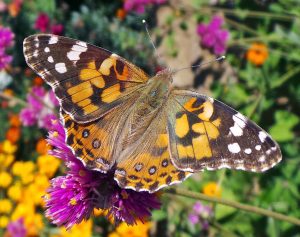
The painted lady (Vanessa cardui) is the most widespread of all butterflies in the world. It is found throughout Europe, Asia, Africa, North America, and Central America. Although not a permanent resident here in Wisconsin (it can only survive very mild winters here), it is a common visitor to the garden, especially in the fall. In most years, the painted lady moves north out of the deserts of northern Mexico and the southwestern U.S. to temporarily colonize the United States and Canada south of the Arctic. The first adults usually arrive in June to begin egg-laying. Periodically, enormous migrations from these deserts inundate other areas of the country, so it can be locally very abundant at times.
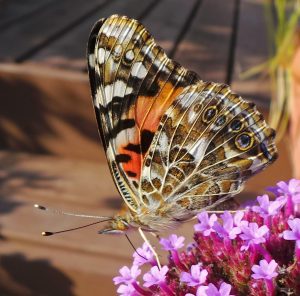
The upper side of the 2-2½” wings are pinkish-orange with thick black lines and white spots near the tips of the forewings. The underside is a pattern of black, brown, red-orange and gray with four small spots near the margins. Females are generally larger than males.
The adults like open areas, such as prairies, old fields, vacant lots, and gardens. They prefer to feed from tall (3-6 feet high) plants, including blazing star, cosmos, New England aster, Joe-pye weed, Mexican sunflower, purple coneflower, and zinnias. They will visit other nectar plants, though, including red clover and milkweed. The adults only live for about 2 weeks, feeding exclusively on nectar. Males perch and patrol during the afternoon for females that are ready to mate.

The female butterflies lay pale green eggs the size of a pin head singly on leaves of many different food plants. The spiny caterpillars, which hatch after 3 to 5 days, are grayish brown or purple-black with yellow side stripes. They feed on the leaves of a wide variety of host plants (more than 100 species have been recorded) primarily in the families Compositae, Boraginaceae, and Malvaceae. Some of their preferred foods include calendula, hollyhock, mallow, sunflower and thistles (including Canada thistle). They eat continually for 5 to 10 days while living in a loosely woven silk nest, and, if numerous, can completely defoliate a plant. They go through 5 instars as they grow to an ultimate size of about 1¼ inches, before pupating on the host plant. The caterpillar hangs upside-down, attached with a single silken string, and forms a naked chrysalis from which the adult butterfly will emerge 7 to 10 days later. The number of generations per year vary from year to year but is generally two in our area. This species overwinters as adults but rarely survives the harsh winters in the Midwest.


These butterflies can be attracted by planting flowers they like, providing shallow water or draining wet sand and keeping the area pesticide-free. Some other garden nectar plants they will visit (in addition to those mentioned above) include butterfly bush (Buddleia), heliotrope, anise hyssop, marigolds, scabiosa, sedums, sweet William and Verbena bonariensis.
Other common, closely-related species, which are actually more abundant in Wisconsin in most years, include the red admiral (V. atalanta) and American lady (V. virginiensis). They can be distinguished from the painted lady by the patterns on the upper and lower wing surfaces. Red admirals have distinct red bands, while the American lady has thinner black lines on the upper wing surface and two larger spots on the underside.

– Susan Mahr, University of Wisconsin
Latest from Wisconsin Yard & Garden
Ask Your Gardening Question
If you’re unable to find the information you need, please submit your gardening question here:





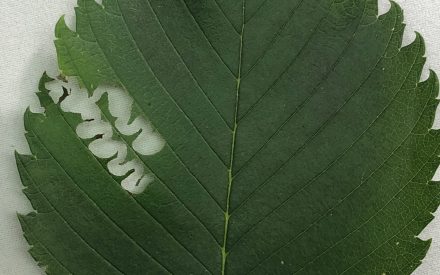 Elm Zigzag Sawfly
Elm Zigzag Sawfly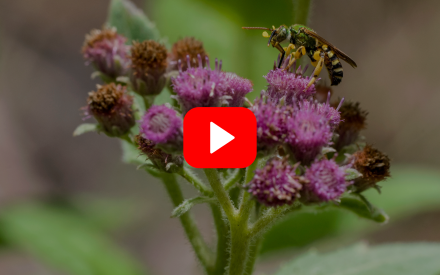 ▶ Watch: Pollinator Gardens: Plant Selection and Garden Care
▶ Watch: Pollinator Gardens: Plant Selection and Garden Care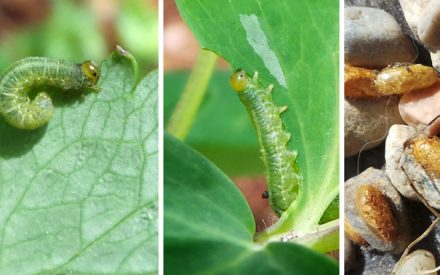 Strategies for Identifying and Managing Insect Pests
Strategies for Identifying and Managing Insect Pests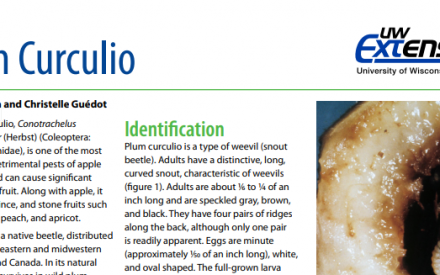 Plum Curculio
Plum Curculio


